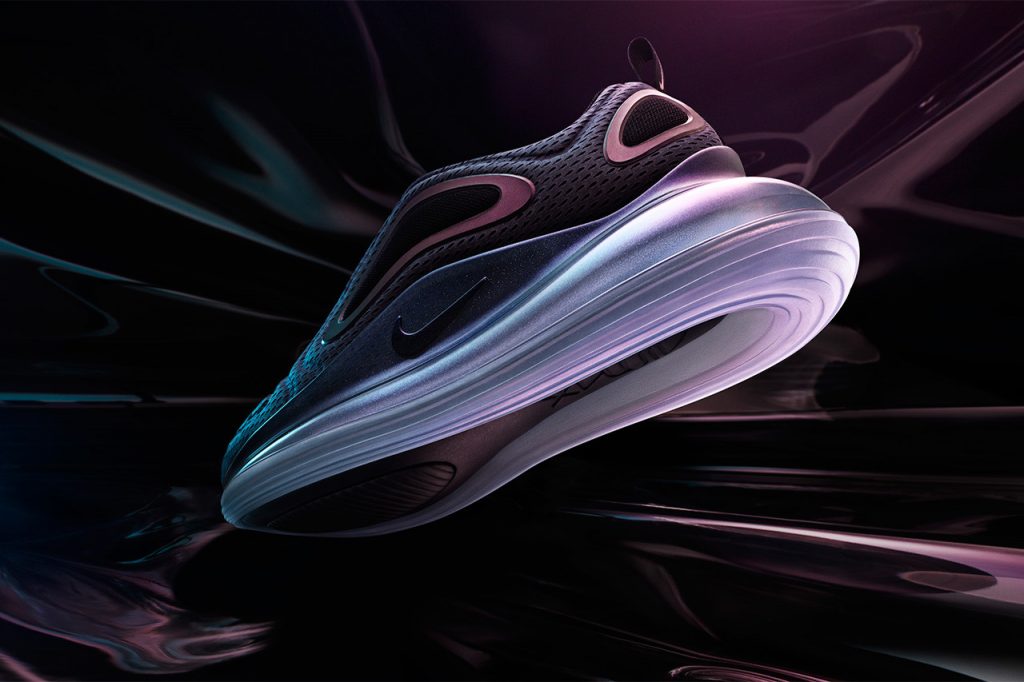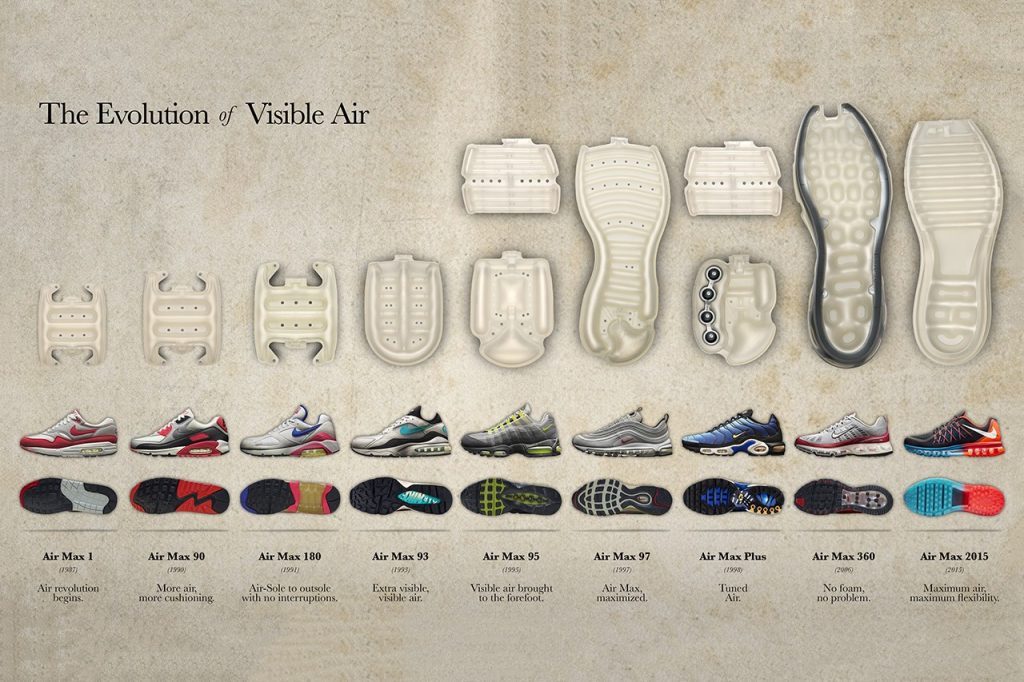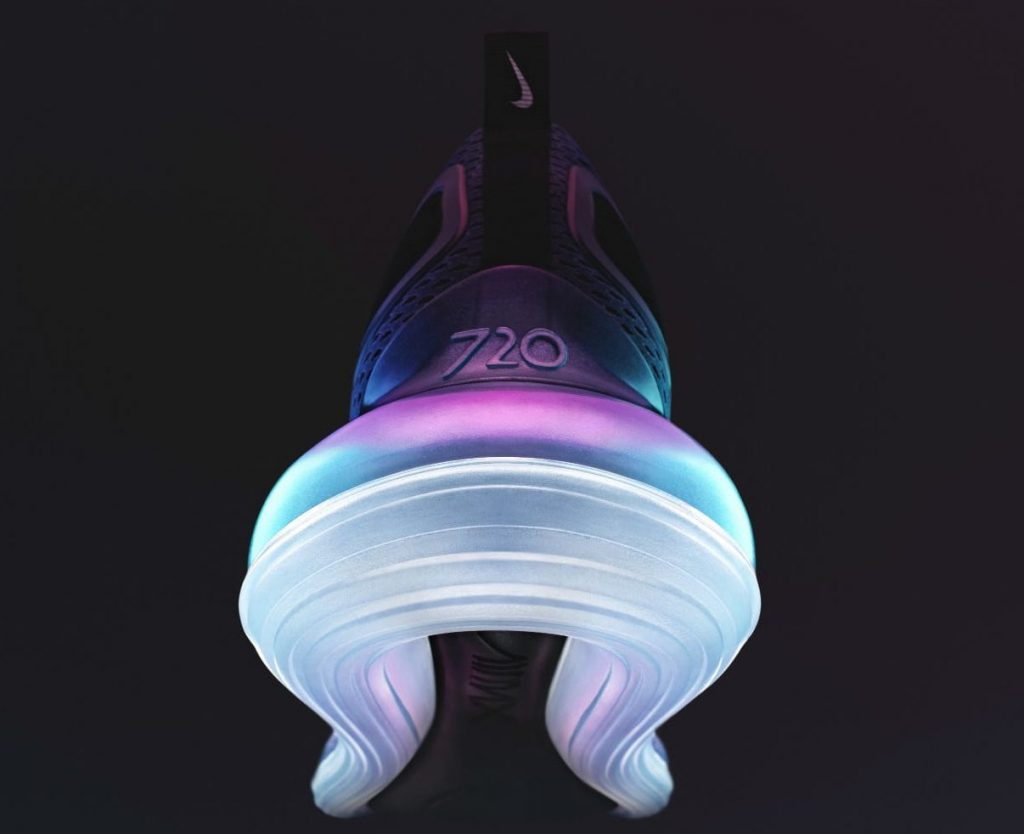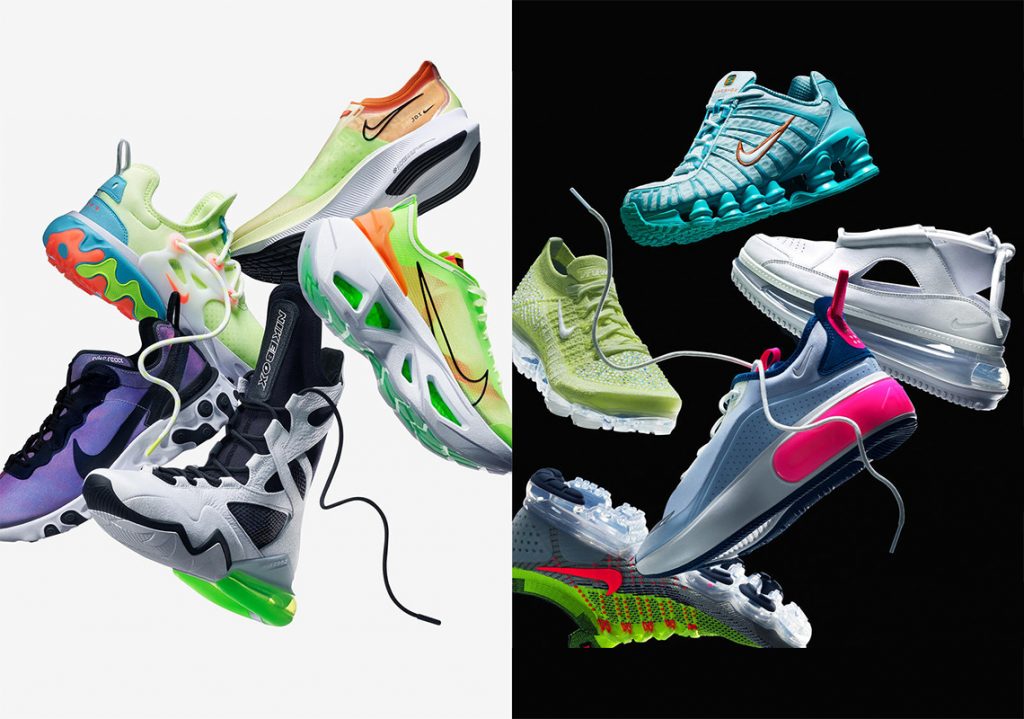
Having written us an amazing article on Nike Shox in our latest issue of Proper magazine (buy it here) we asked our mate Marianna to write us something on the Nike Air Max 720. And if you like what you read you can check out more of her work on the awesome novboi site here.
Sustainability has been the hot topic over the past few months. Not only has it been a word-of-mouth point of discussion between consumers, but brands are seriously beginning to consider and implement actions around their manufacturing processes. Nike is one of the big brands placing an even larger focus on sustainability this year.
The Air Max 720, although not to everybody’s taste, should be celebrated and talked about for this exact reason. When the silhouette first leaked back in October, many questioned its design, primarily the giant and overbearing airbag, bigger than in any Air shoe we had seen before.
Although it touches on the whole dadcore trend happening right now, as well as another potential take on what the contemporary high-fashion trainer looks like, there was something larger and more significant in its introduction: the enormous shift in what Air represents to Nike and its consumer.
Personally, I questioned why Nike was pushing this change. Not only would this new era of Air change the dynamics of their sneaker output, but it would also affect apparel, accessories and the entire mood of Nike. As we saw with the VaporMax, the most recent iteration of Nike Air always takes precedence for a significant time after its introduction. In 2017, VaporMax pushed Air into a futuristic territory. It was somewhat robotic, mimicking the bionic foot, but yet still affiliated with comfort and sport. It pushed Air away from heritage. It played a part in the need for the large gap between the ‘classics’ and the ‘tech’ on Floor 2 of Nike Town.
However, with the 720, Air is no longer aimed at the athlete. Now exclusively cemented within the category of style, it can sometimes be difficult to pinpoint where exactly it belongs in the culture of Air. After looking into the shoe’s background, I learned that the Air Max 720 was designed with a much bigger aim in mind.
Being the tallest Air Max sole ever created – coming up to 38mm length – the 720’s material and production credentials are incredibly important. Its sole is made up of 75% recycled waste materials, a fact which not many know about. Nike isn’t overtly promoting or pushing this statistic because promoting Peggy Gou’s or Miniswoosh’s affiliation with the 720 is a much smarter marketing move. That’s not to say that they don’t want us to be aware of it. The simple fact is that production stats are never the quickest way to make a consumer want to spend £150 on a pair of shoes, and yet, businesses who embark upon this ecological shift today will be better prepared in the future for further changes. More and more millennials are placing value on a company’s ethical practices and this will show much more in the long-run.
On top of Nike’s environmentally-targeted agenda, the shoe’s very maximalist design speaks for another global problem being dealt with today. The bold and futuristic design is aimed at the urban millennials that want to make a change in society and need the necessary, expressive tools to help push them forward. It’s probably fitting that non-conformity for
Nike has come at a time where almost every aspect of wider society and politics is involved in discord, unrest and ripping up the rulebook of what is acceptable or normal. For the general unrest in today’s world, the AM720 stands as another form of activism. Evidently, Nike is utilising novel and mindful techniques during a time when the consumer needs brands to respond to their outcries. When the legendary creator of Air,

Tinker Hatfield, established Nike Air in 1987, the Air Max 1 donned visible, and yet delicate, air bubbles in its sole. As the years went by, these pockets expanded, becoming less so ‘pockets’ and more so entire platforms on which the athlete’s foot would rest. Said to be have become significantly underwhelmed with the company’s design developments in recent years (perhaps due to Nike’s intense dedication to nostalgia and anniversary fever) Hatfield took advantage of said social and political climate to push the ultimate Air expansion to produce a silhouette that was not only fashionable but largely necessary.
It’s also incredible to think about how major Nike’s sustainability efforts have been even 10 years ago. All their shoe-sole innovations post-2008 have been composed of no less than 50% recyclable waste, while 75% of all Nike products today already contain some recyclable materials. The Air Max 270, released early last year, is said to be made out of 70% recyclable waste, and the VaporMax an impressive 75%. It is also said that Nike has diverted and up-cycled more than 6 billion plastic bottles from landfills since 2010.
In their latest Sustainability Business Report, they pledged to shift to 100% renewable energy in the US by 2019 and worldwide by 2025. Innovation for them means constantly thinking of new ways in how to better the environment because they believe that “the future of sport is interlocked with the future of our planet”. It’s an ongoing battle. So although the 720 is not the first Nike shoe to champion sustainability, when combined with the very evidently new and in-your-face generation of Air, it solidifies their environmentally-friendly ethos moving forward. This bold silhouette stands for the brand’s overarching focus on sustainability.

And yet still, while the similarly sustainable VaporMax allowed the brand to remove a layer of foam for a more sustainable ‘future of sport’, the 720 is a completely new way of thinking for pure, lifestyle design. Especially for Nike, a brand with the athlete always in mind, this is a milestone in their history. They’ve shifted Air from sport performance to sport style, marking the future of the lifestyle Air Max, designed to meet the needs of daily life.
The 720 sole will be used on several more shoes and silhouettes in the coming year,especially with hybrids and collaborations dominating the sneaker market. Plus, the brand has been pushing some other exciting sustainable releases recently, including the Summer Women’s Collection , the Earth Day Pack, the Plant Colour Collection and the VaporMax Random 2 .
It’s interesting to think about what such developments will mean for the future of a company’s sustainable practices. Will brands get on the environmentally-cautious bandwagon to win over the youth’s more ethical mindsets or will fashion nonetheless continue to take first place for this consumer? Does sustainability belong in fashion or is it a boring practice that only certain niche markets, such as Patagonia, thrive in? And will brands – those like Nike – that are already implementing levels of sustainable production continue this do-gooding internally without expressing it outwardly or will a no-profit return deter them?

It seems like Nike is really trying to become the best possible version of itself that it can be. The brand isn’t expecting its customers to accept the 720 because it’s sustainable – this isn’t the selling point. Instead, it wants consumers to like the shoe for its innovative qualities, comfortability and dedication to the zeitgeist while remembering that the bubble, which of course is where your attention is immediately drawn, is immensely good to the planet.
The new generation of Air found within the 720 is more eco-friendly than ever before as well as progressive in more ways than one. The new silhouette strengthens their ethos partially through the design’s shock factor, partially through this new generation of Air, and partially because of how sustainable the shoe is. An ethos that will be embedded within hundreds of thousands of new products in Nike’s future, it’s exciting to predict what new territories Air will move into in the foreseeable future. And if anyone can and should be leading the way to make sustainability ‘the new normal’, I’m sure everyone can agree that it’d be the Swoosh.
